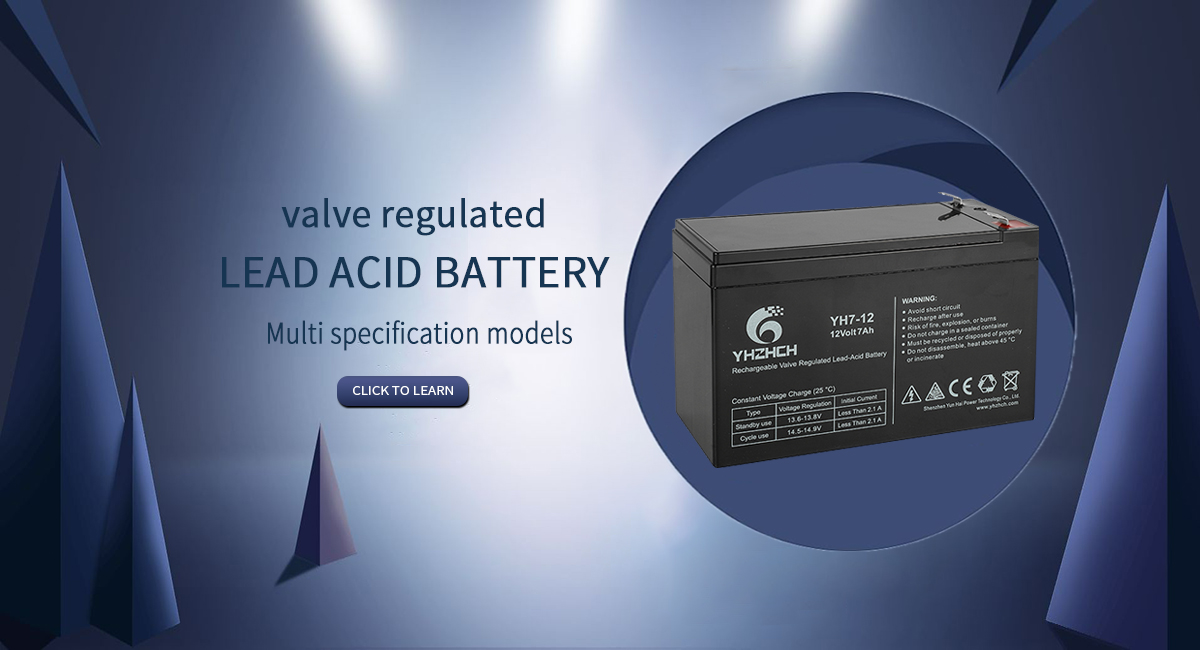
Valve regulated sealed lead-acid battery (VRLA) is a maintenance free lead-acid battery, which works based on the basic electrochemical reactions of lead-acid batteries and achieves sealing and gas recombination through special structural design. The following is a detailed analysis:
1、 Basic structure and key components
Polar plate material
Positive electrode: Lead dioxide (PbO ₂), brown in color.
Negative electrode: Sponge like metallic lead (Pb), presenting a bluish gray color.
Partition: Using ultra-fine glass fiber (AGM) or gel (GEL) to isolate positive and negative electrodes and adsorb electrolyte.
electrolyte
Dilute sulfuric acid (H ₂ SO ₄) undergoes an electrochemical reaction with the electrode plate.
Sealing structure
The shell is sealed with ABS or PP material, and there is a one-way exhaust valve (safety valve) on the top to release excess gas and prevent external air from entering.
2、 Charge discharge electrochemical reaction
1. Discharge process (chemical energy → electrical energy)
Positive electrode reaction: \ (PbO2+4H ^++SO4 ^ {2-}+2e ^ - \ rightarrow PbSO4+2H2O \) Lead dioxide reacts with hydrogen ions and sulfate ions to form lead sulfate and water, releasing electrons.
Negative electrode reaction: \ (Pb+SO4 ^ {2-} \ rightarrow PbSO4+2e ^ - \) Metal lead reacts with sulfate ions to form lead sulfate, which loses electrons.
Total reaction: Lead compounds with positive and negative electrodes react with sulfuric acid to produce lead sulfate and water, and the battery outputs electrical energy to the outside.
2. Charging process (electrical energy → chemical energy)
Positive electrode reaction (electrolysis): \ (PbSO4+2H2O \ rightarrow PbO2+4H ^++SO4 ^ {2-}+2e ^ - \) Lead sulfate decomposes into lead dioxide, hydrogen ions, and sulfate ions under the action of electrical energy, absorbing electrons.
Negative electrode reaction (electrolysis): \ (PbSO4+2e ^ - \ rightarrow Pb+SO4 ^ {2-} \) Lead sulfate decomposes into metallic lead and sulfate ions, obtaining electrons.
Total reaction: \ (2PbSO4+2H2O \ rightarrow PbO2+Pb+2H2SO4 \) Lead sulfate and water are converted back into electrode material and sulfuric acid, and the battery returns to its energy storage state.
3、 Valve controlled sealing and gas recombination principle
Gas generation problem
At the end of traditional lead-acid battery charging, water will be electrolyzed to produce hydrogen gas (H ₂) and oxygen gas (O ₂), leading to electrolyte loss and safety hazards.
Solution for valve controlled sealing
Mechanism of oxygen recombination: At the end of charging, the positive electrode first releases oxygen: \ (2H2O \ rightarrow O2 \ uparrow+4H ^++4e ^ - \) Oxygen diffuses through the separator to the negative electrode and reacts with metal lead to produce lead sulfate and water: \ (2Pb+O2+2H2SO4 \ rightarrow 2PbSO4+2H2O \) This reaction consumes oxygen, avoids gas accumulation, and reduces some lead sulfate to supplement the electrolyte.
The hydrogen control negative electrode has a high hydrogen evolution potential, and almost no hydrogen evolution occurs under normal charging voltage (≤ 2.35V/cell). Only a small amount of hydrogen evolution occurs during overcharging, and is discharged in a small amount through a safety valve to avoid excessive internal pressure.
4、 The function of safety valve
Opening condition: When the internal air pressure exceeds the set value (usually 10-40kPa), the safety valve opens to release gas and prevent the shell from expanding; After the air pressure drops, it automatically closes and maintains a seal.
Prevent external pollution: When turned off, prevent dust and moisture from entering the battery to maintain electrolyte stability.
5、 Implementation of maintenance free features
Due to the oxygen recombination reaction recovering most of the water produced by electrolysis, the consumption of electrolyte is minimal, and there is no need to add water regularly;
The sealed structure reduces the overflow of sulfuric acid vapor, avoids corrosion and environmental pollution, and has low maintenance costs.
6、 Summary of Working Principles
Valve regulated sealed lead-acid batteries achieve energy storage and release through "lead-acid electrochemical reaction+oxygen recombination cycle". Combined with sealing structure and safety valve design, they solve the gas leakage and maintenance problems of traditional lead-acid batteries while maintaining high reliability. They are widely used in UPS power supply, communication base stations, energy storage systems and other scenarios。


